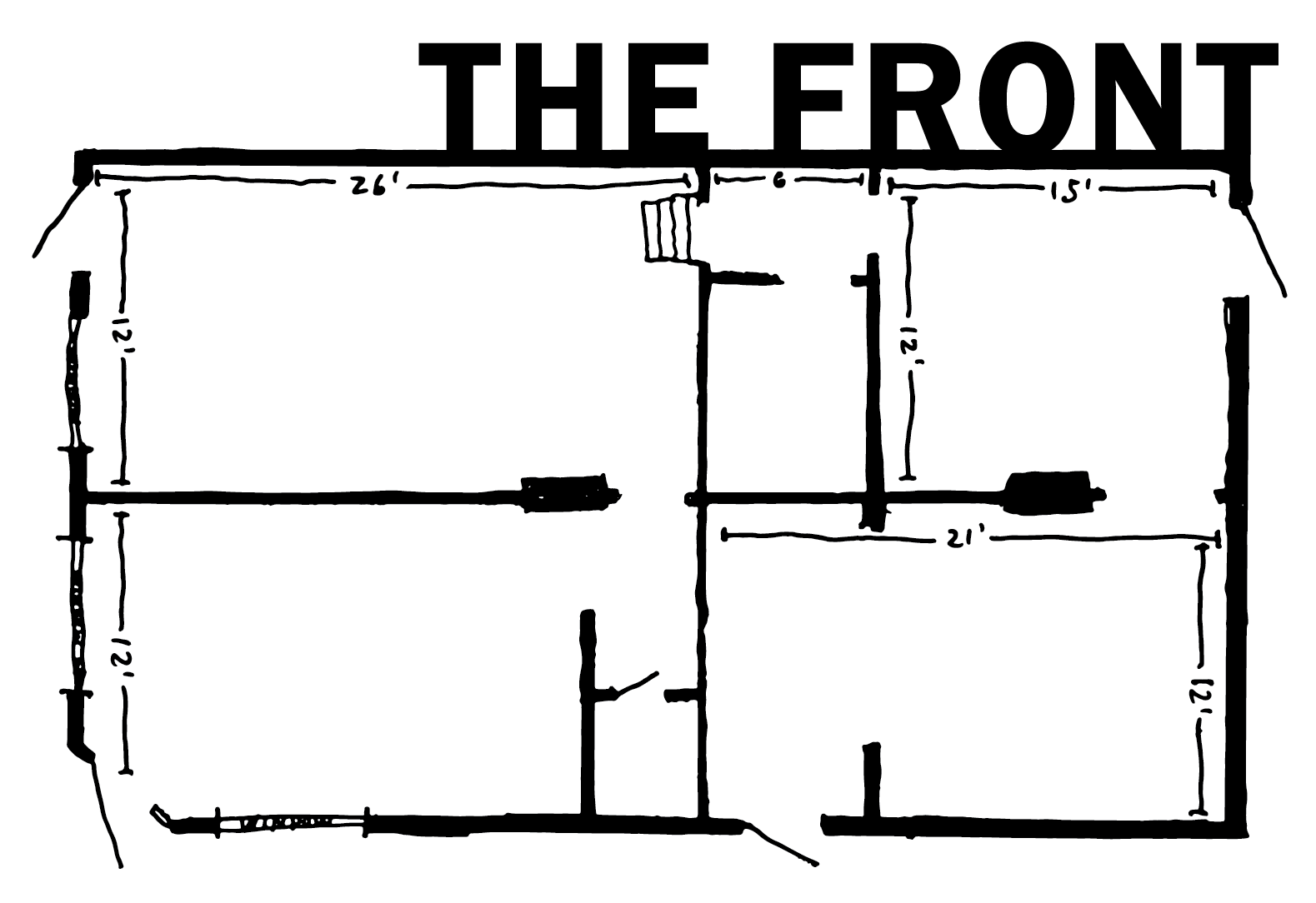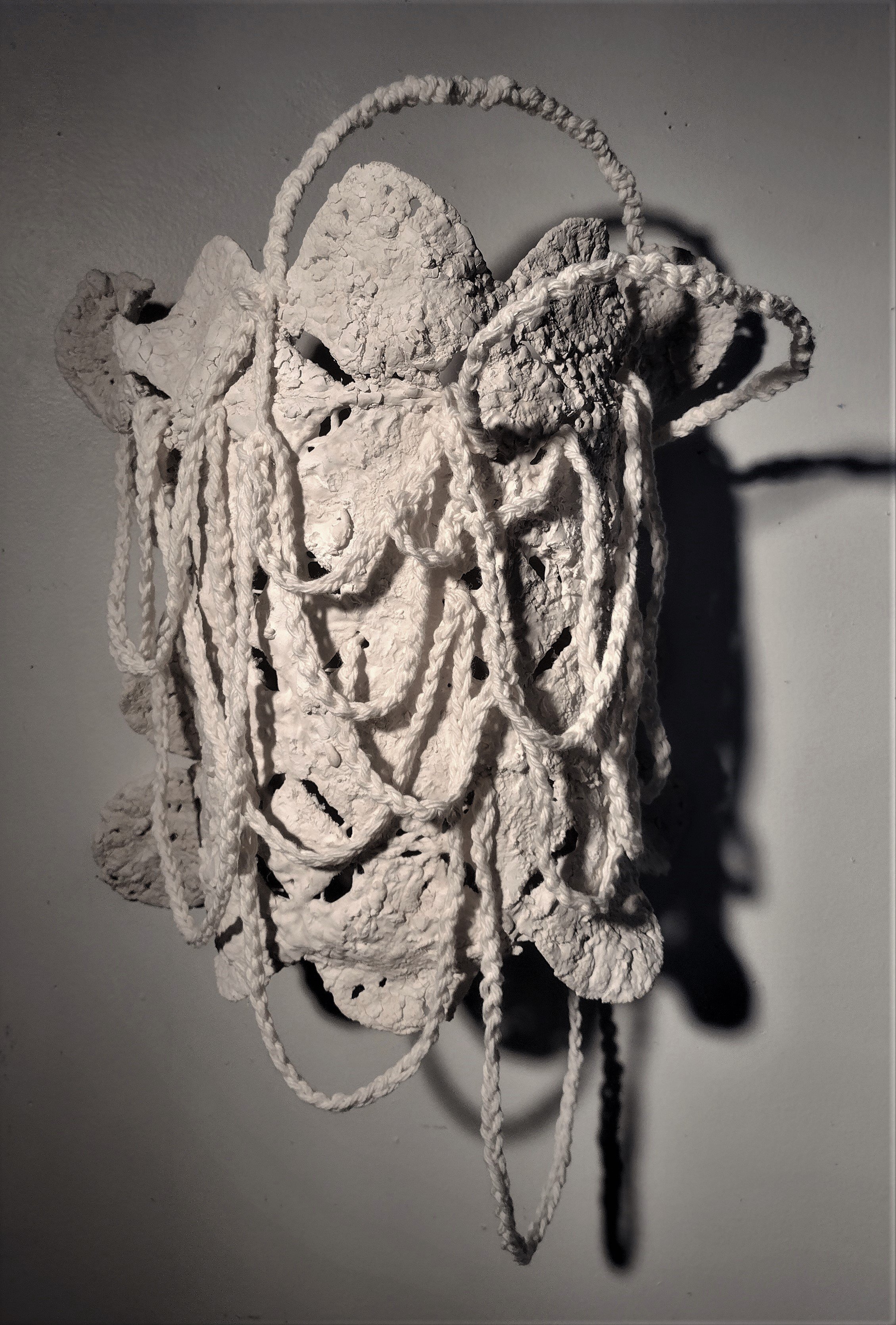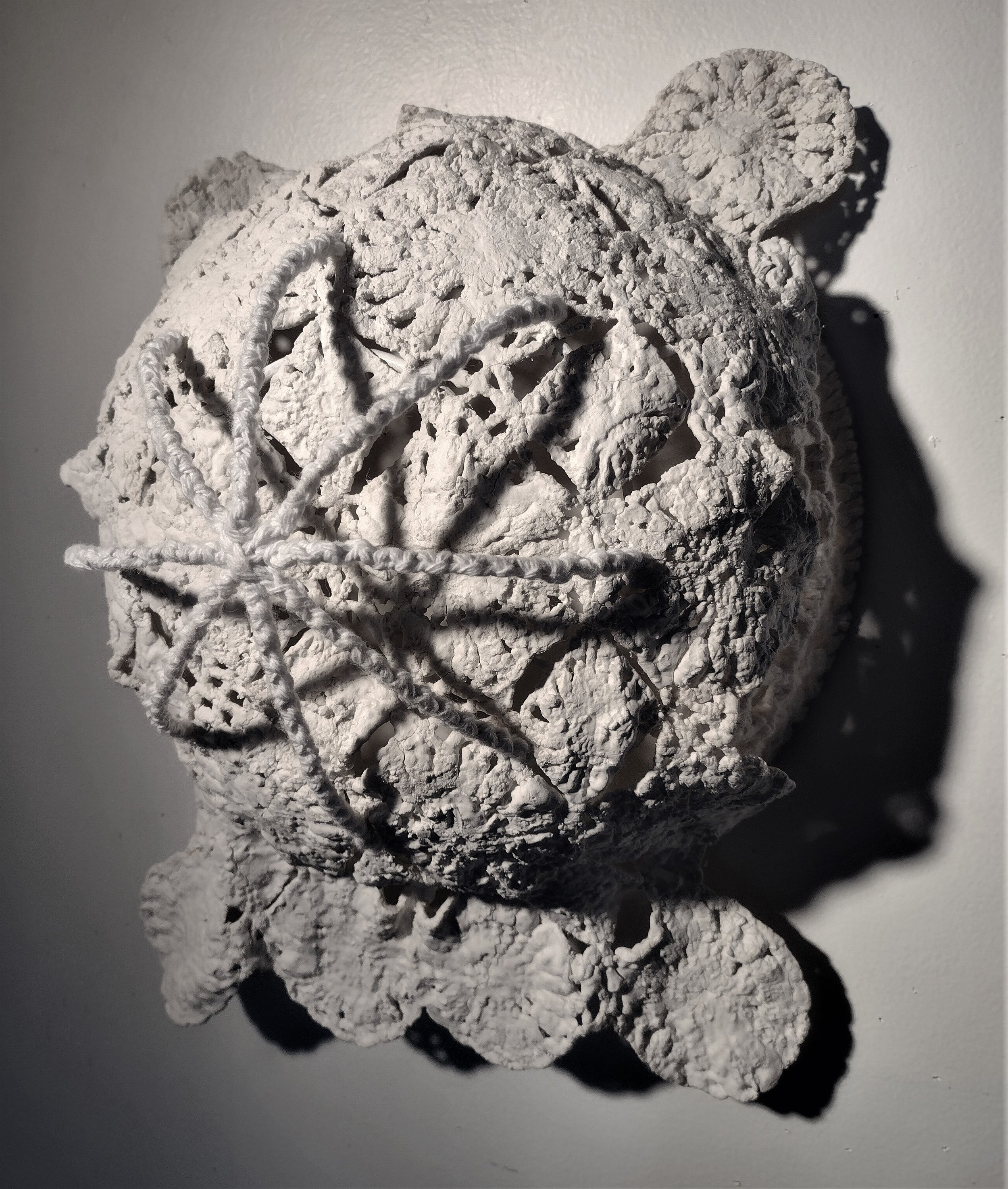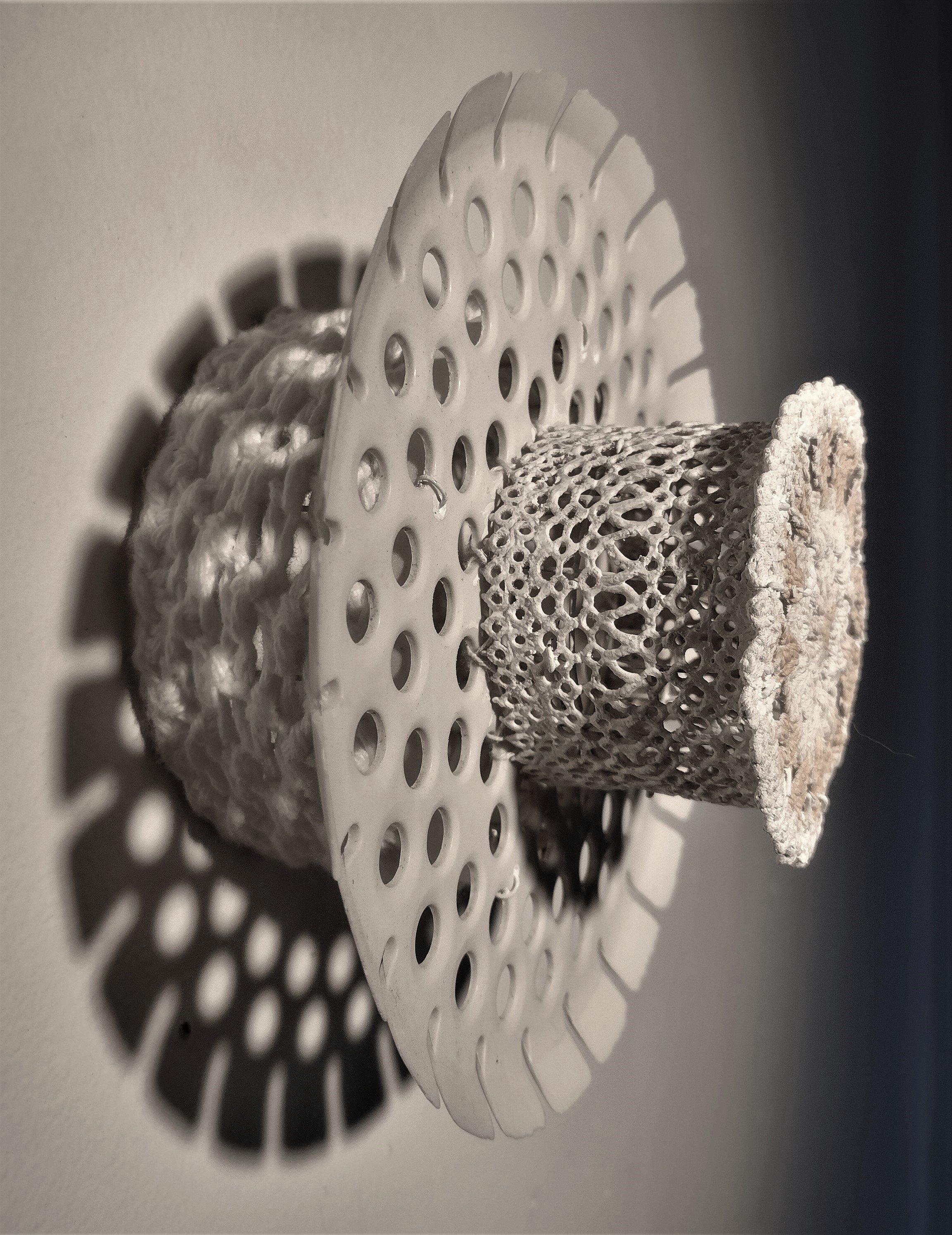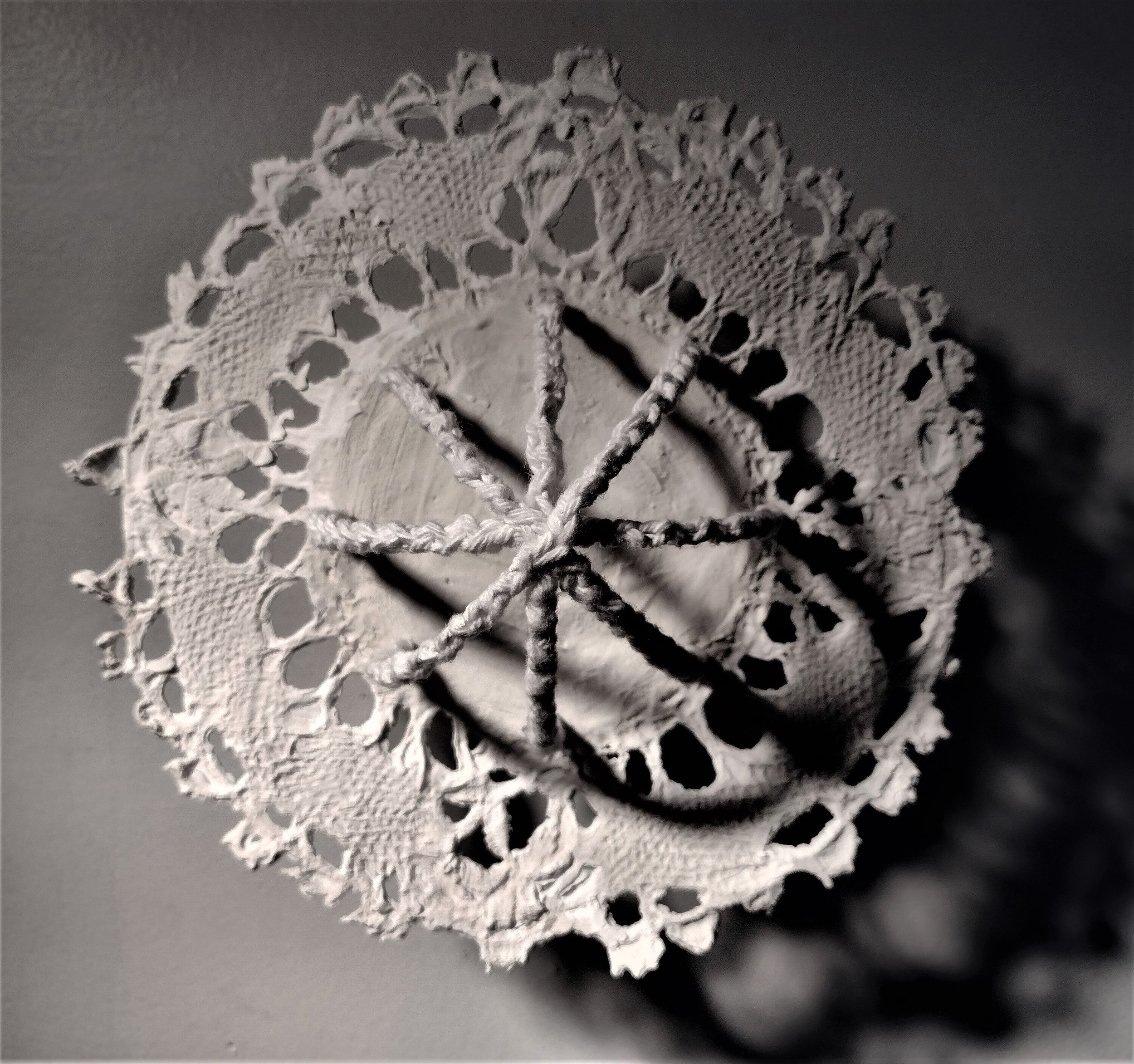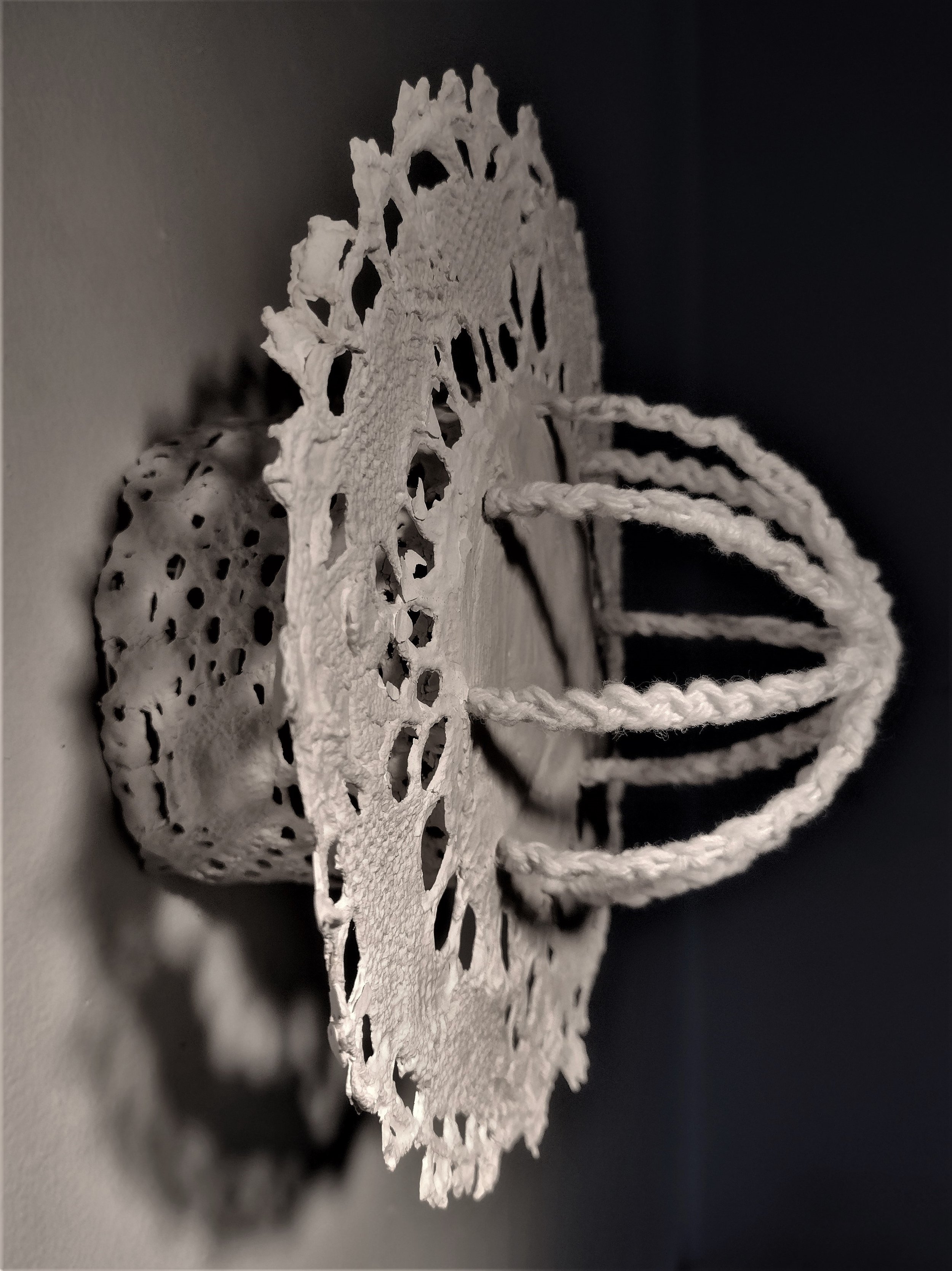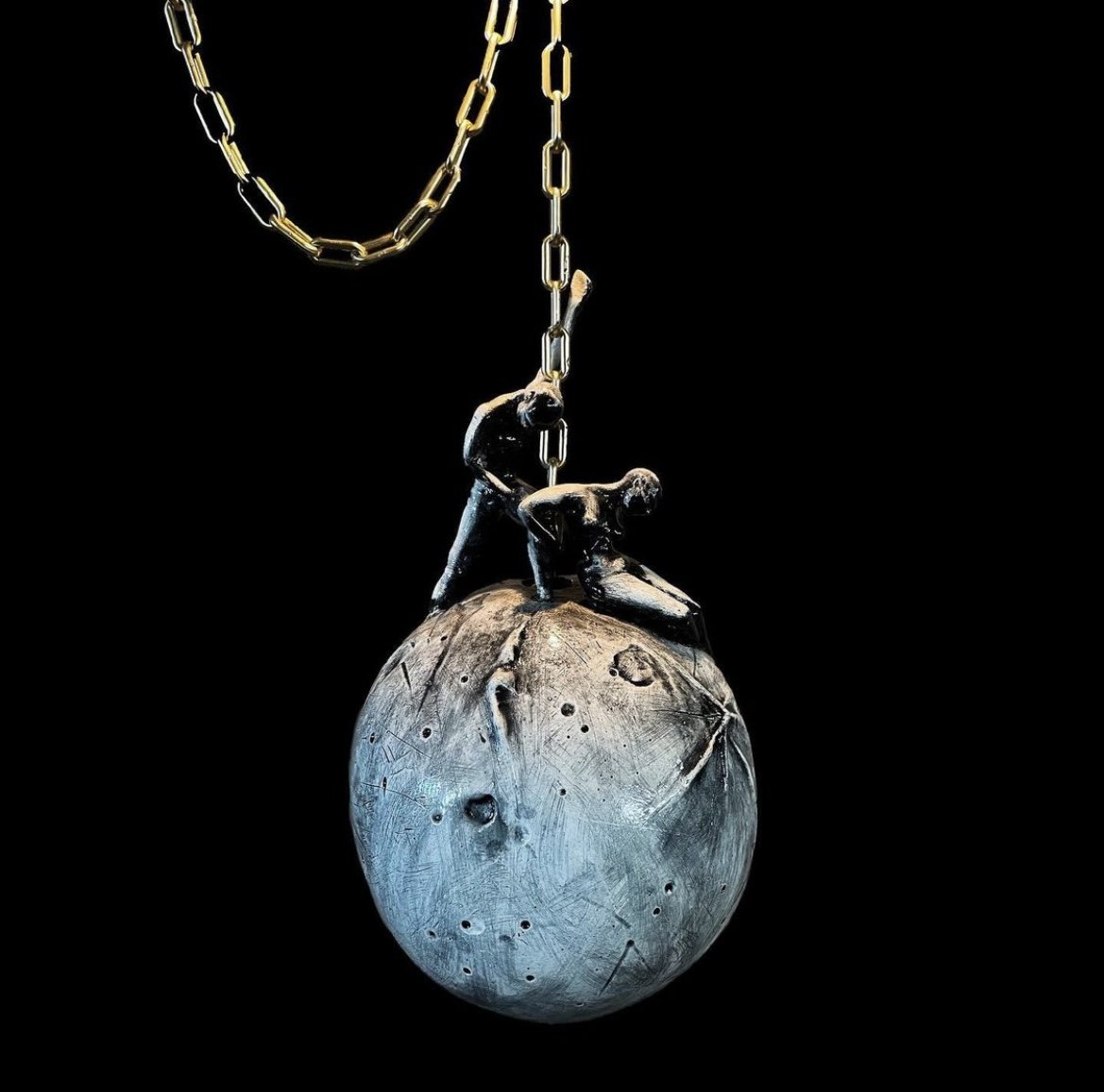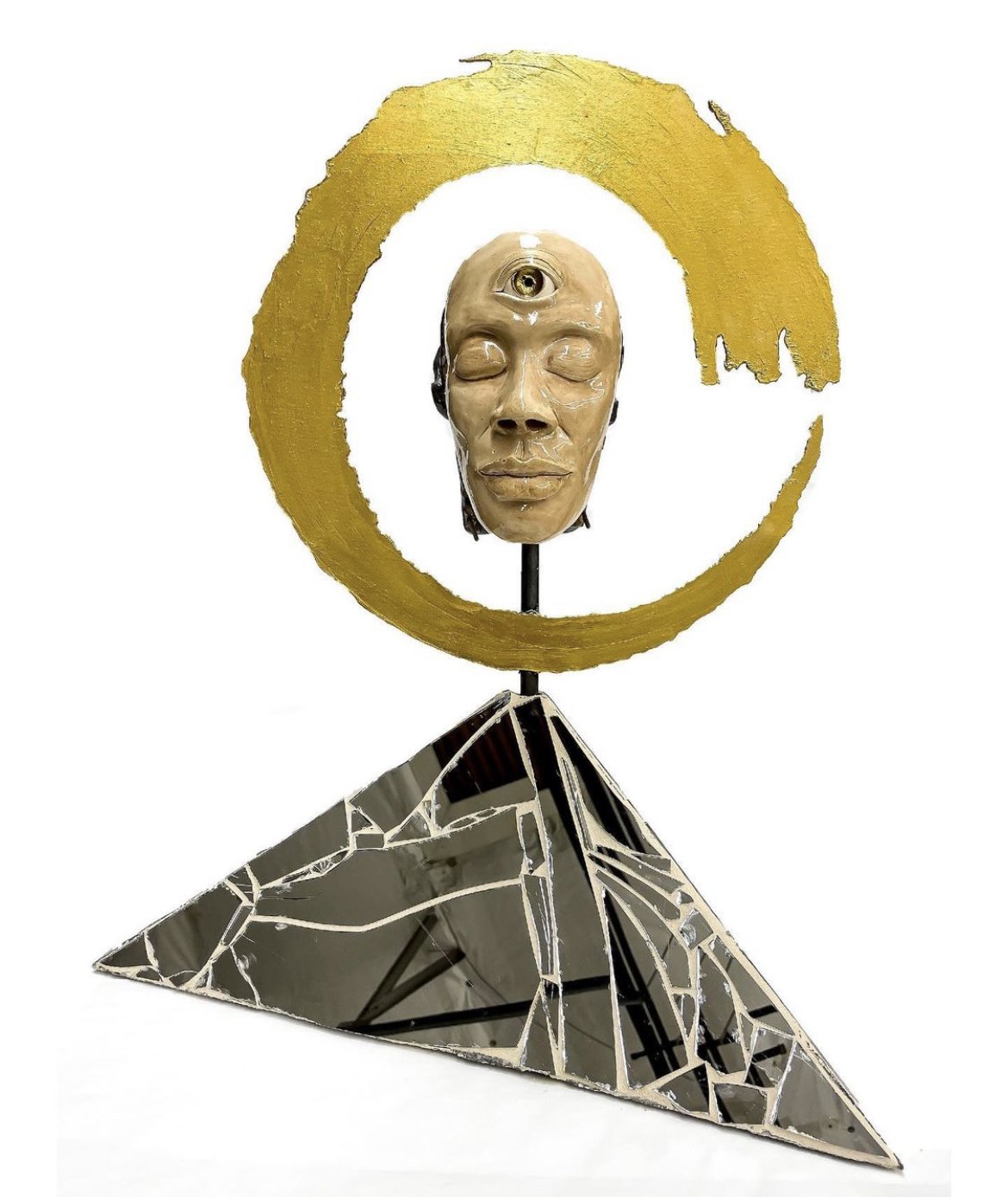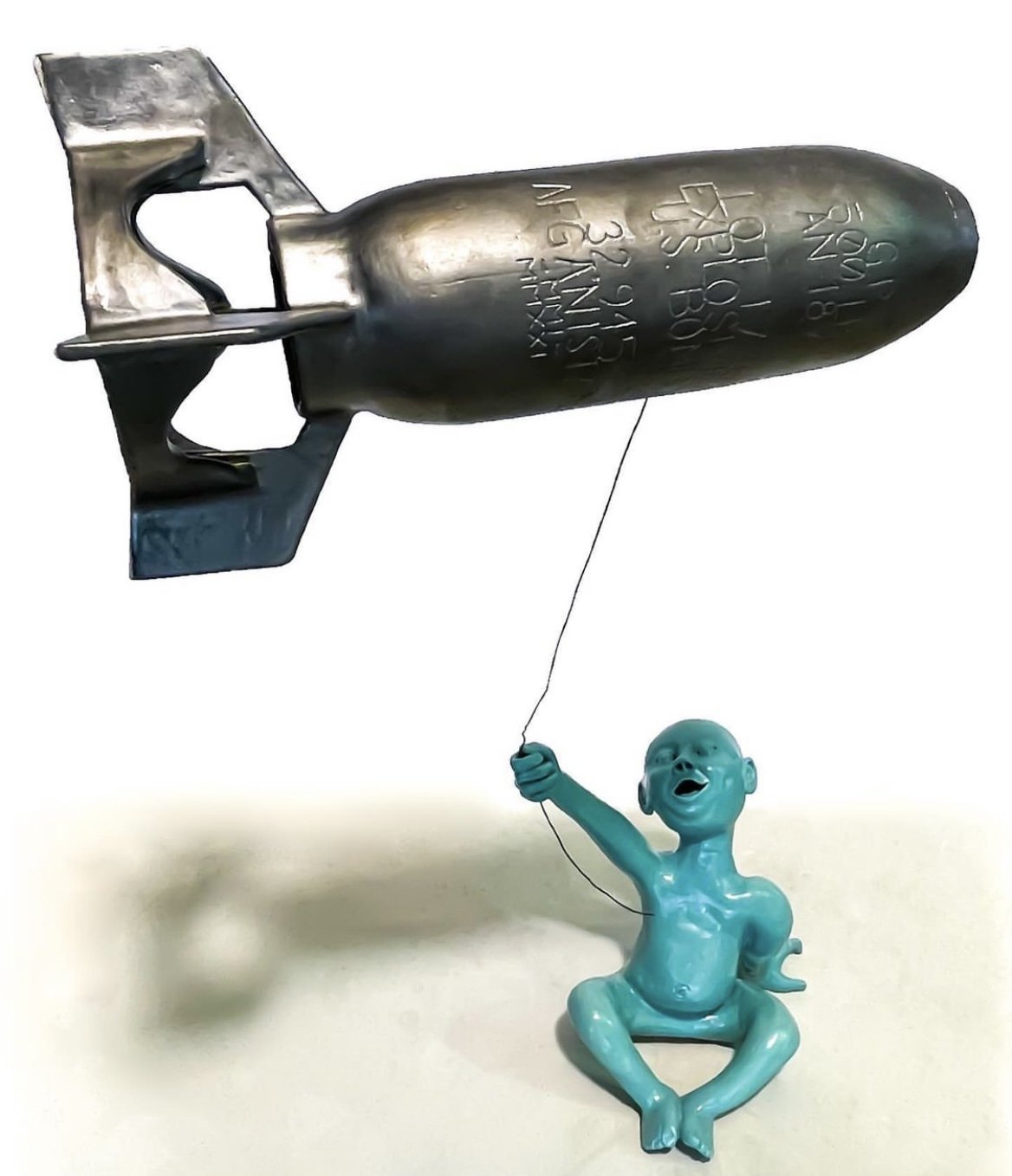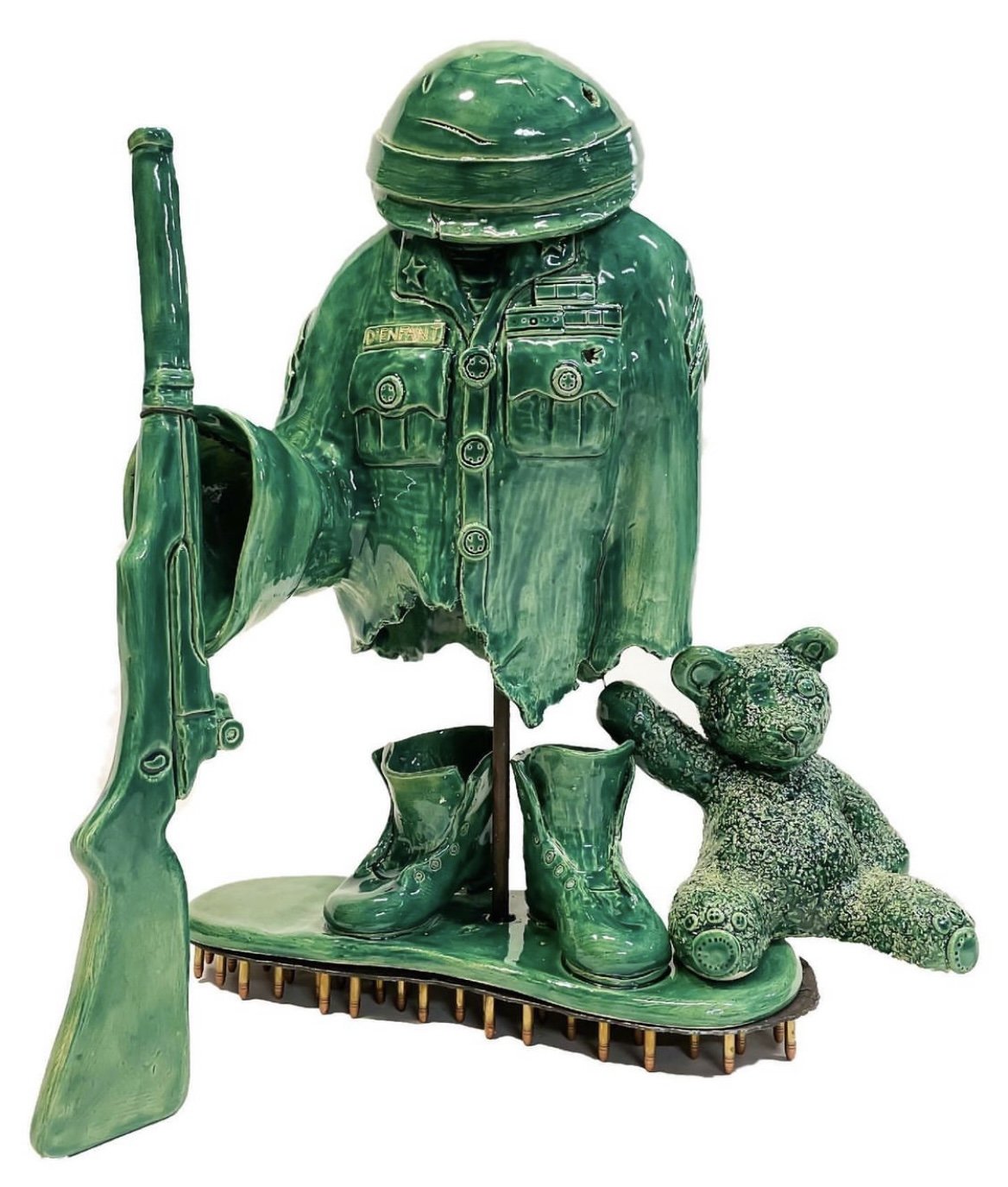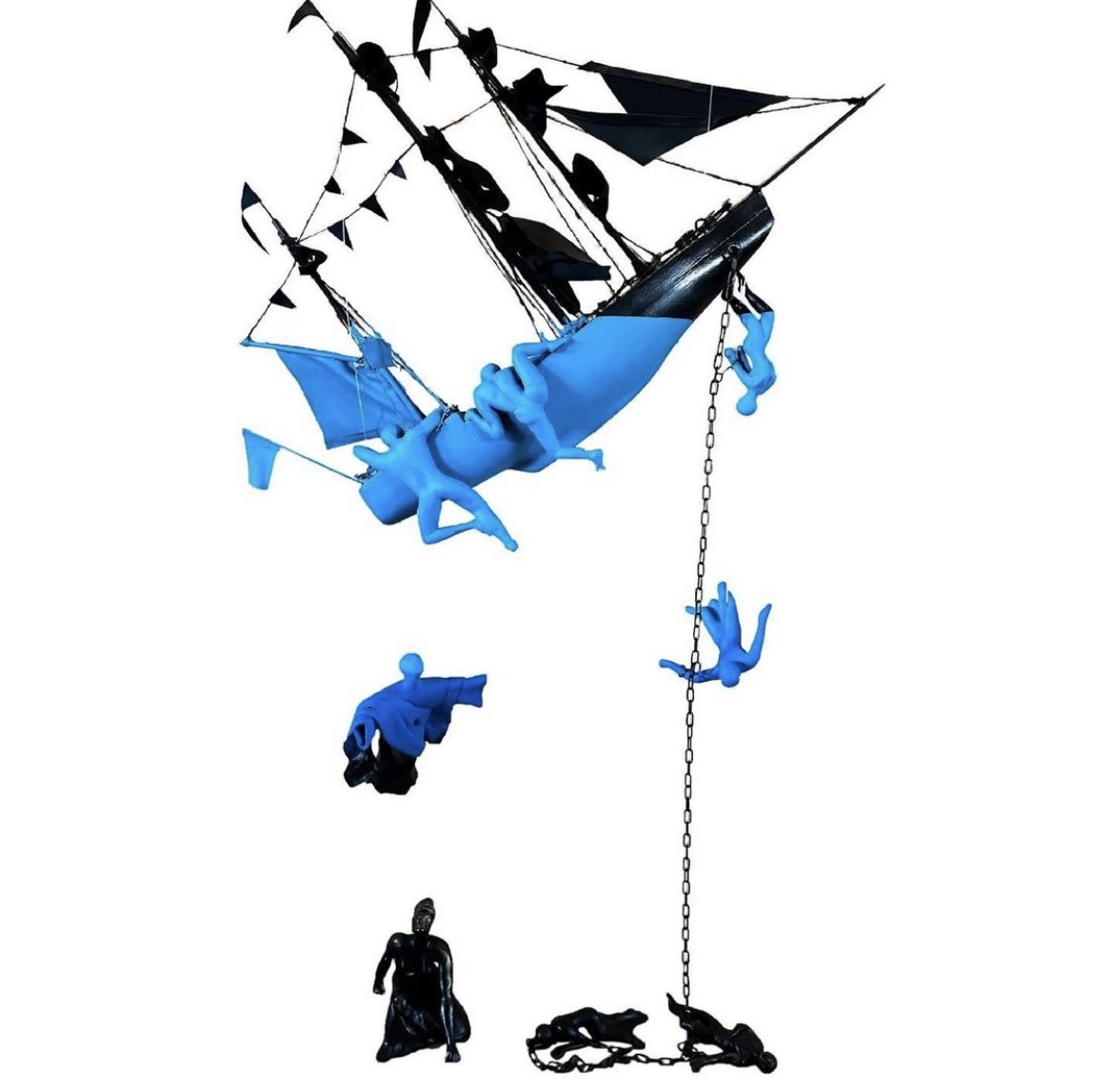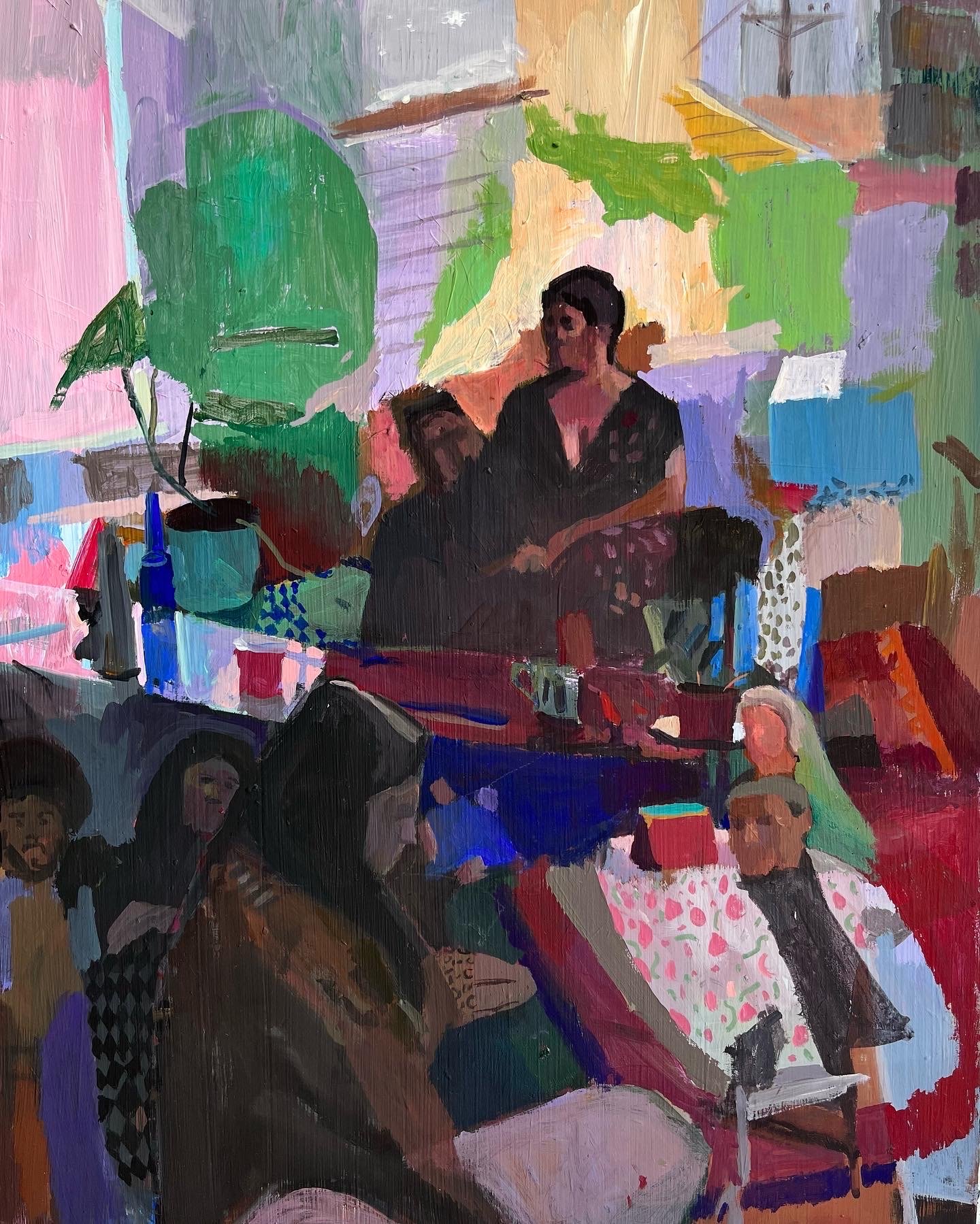October 8 - November 6
Opening reception Second Saturday, October 8, 6-10pm.
Gallery hours are Saturdays and Sundays, 12-5pm.
Be sure to check out The St. Claude Art Rag for more info on the Second Saturday Art Openings on St. Claude!
programing this month:
October Artist Talks
Sunday, October 23
Augustus Hoffman, The Space In-Between, 2:00 pm
Kyle Salandy, Kyle Salandy, 2:30 pm
Cynthia Scott, The Past Is Not Past, 3:00 pm
Room 1
Cynthia Scott |Idag | Antique lace, plaster, hand crocheted cotton yarn, metal |18” x 12” x 7.5” |2022
Cynthia Scott |Stangd | Antique lace, plaster, hand crocheted cotton yarn, metal, paint |12.5” x 9” x 7” |2022
Cynthia Scott |Imorgon | Antique lace, plastic, hand crocheted cotton yarn, metal, paint, resin, gesso |6.5” x 6.5” x 4.25” |2022
Cynthia Scott |Timme | Antique lace, antique doily, hand crocheted cotton yarn, plaster, metal, paint, gesso | 7” x 7” x 5.25”
Cynthia Scott |Timme detail | Antique lace, antique doily, hand crocheted cotton yarn, plaster, metal, paint, gesso | 7” x 7” x 5.25”
The Past Is Not Past
Cynthia Scott
After a lengthy process of emptying my great-grandfather’s house of generations[1] worth of “collectible” items, I was struck by how much was unusable in our present lives. The stuff oppressed me. Although none of it was junk, I couldn’t justify making space in my home for things I wouldn’t use for any reason but nostalgia for times past.
The only now useless items that spoke to me were my grandmother’s vast collection of handmade lace – much of it made by her. The doilies, table runners, placemats, antimacassars[2] and ribbons of trimming were rich in metaphorical possibilities. Feeling stuck in my personal practice (possibly pandemic induced), I decided to make an abrupt change and use what had been put before me.
The new lengthy process of engaging with the intricacies of the lace involving plaster, resin, contemporary additions and my own crochet provided time to reflect and contextualize. My grandmother never worked outside the home and I never asked whether her industrious lacemaking was a substitute for larger ambitions she may have had. And never having met my great-grandfather I can only guess that, as a white Swedish immigrant in southern Alabama, his attitude toward people of other races was not an enlightened one. In the busy present we can overlook the fact that in the recent past women had no autonomy and people of color had no rights – or were persecuted and even murdered for trying to exercise them. We had become so accustomed to the relative freedoms that others before us had fought hard to obtain that we didn’t realize how swiftly they can be taken away. We’re learning that now.
It's déjà vu all over again.
[1] My great-grandfather and great-aunts, grandparents, and parents had all lived in the house over time.
[2] A piece of cloth put over the back of a chair to protect it from grease and dirt or as an ornament.
Cynthia Scott followed a BFA in Sculpture from RISD with stints as an actress (Aliens) and singer(Red Flame/Virgin 10 Records) in New York, London and Los Angeles – eventually completing the circle by establishing a home and art studio in New Orleans. She received her MFA in Studio Art from Tulane University in 2008.
Scott is the recipient of several public art commissions, an Artist Fellowship, and numerous grants from Louisiana Division of the Arts, Louisiana Cultural Economy Foundation, the Contemporary Arts Center’s SweetArts Fund, and Transforma Projects. She has exhibited in London, Edinburgh, Mexico City, New York, Los Angeles, Houston, Philadelphia, Atlanta, Providence, Baltimore, Cedar Rapids, Minneapolis, Nashville, New Orleans, Baton Rouge, Lafayette, Alexandria (LA), and cities in Alabama, Texas, South Carolina and California. From 2009 to 2011 she established and coordinated Current:NOLA, a discussion group/think tank of artists and writers engaged in raising the national and international profile of contemporary New Orleans visual art through dialogue, promotion, and critical writing.
Scott was a founder member of Staple Goods gallery and is now a member of The Front. She lives in New Orleans with her musician husband and several cats.
Room 2
Kyle Salandy
Kyle Salandy, THE LAST HOPE, Glazed ceramic, plastic chain, spray paint, 22” x 16”, 2022.
Dr. Stephen Hawking, the late English theoretical physicist, cosmologist, and author, predicted that based on the current negative health of our planet thanks to human involvement, that we as a species have 100 years left on the only place we have ever called home. The question of whether to relocate to another celestial body in colonies or resolve the environmental issues here is a debate among environmental scientists. This work was created to express the vast expanse of our nature less future if our next moments as a global society aren’t executed flawlessly.
Kyle Salandy, CAPSIZE, Ceramic, wood, acrylic paint, fabric, hemp string, 23" x 10" x 5', 2022.
During the Transatlantic slave crossings, many enslaved Africans realized their fate if they concluded their journey across this vast ocean and arrived at the shores of the New World. With this, they deemed a life enslaved isn’t a life worth living, so some jumped ship to avoid such an existence and possibly an existence for their children and generations after. This piece is in tribute to those sacred African souls that cover the ocean floor of these slave shipping routes, the ones that fought on, and the women that lead us to freedom. This also pays respect to the ones who were martyred in the name of Black unity and equality and working to capsize the systems that are still in operation today stemming from the first movements of Africans to the New World in the early 16th century.
Kyle Salandy, A CHILD’S GAME, Glazed ceramic, steel, .22lr bullets, 16"x 12" x 20", 2021
In 2020, there were an estimated 8500 children across the world that were employed as combatants in war. Whether sold into the military by their family, kidnapped into a life of war, or captured as a spoil of war themselves, children soldiers fight and die in conflicts they have no true understanding in.
This sculpture was inspired by the little green toy soldiers I occasionally played with as a boy. The omission of the human component of this sculpture was in memory of the young lives lost. In one hand he holds a rifle, a symbol of his new occupation. In his other hand, a teddy bear, a relic of his now distant past, a past he holds onto dearly and ever so desperately.
Kyle Salandy, RESILIENT SMILE, Glazed ceramic, aluminum. Child: 18" x 18" 20", Bomb: 22" x 10" x 10", 2021
Youthful Ignorance was made in memory and honor of the 32,945 children claimed as casualties of war during the United States’ longest war: The War in Afghanistan,2001-2021. The focus of this sculpture was to acknowledge and express covetousness for a child’s ability to find solace and joy even amid tribulations, hence the gleeful smirk of the child in adoration of what he perceives as an innocent balloon. A child’s ability to find life’s silver linings is a trait we adults need to reacquaint ourselves with.
The aluminum base of the sculpture is a plasma cutting of Afghanistan where the baby is positioned to point at Kabul, the capital of Afghanistan, a region that was no stranger to heavy bombardments and casualties.
In homage to the great Afghan people and their ancient traditions, turquoise was chosen for the baby’s hue to represent the traditional Iztalifi pottery which is glazed in a beautiful light blue & turquoise Ishkar glaze.
Kyle Salandy, NKISI N’KONDÉ, Glazed ceramic, glass, nails, steel, cement, 20"x 20" x 22", 2021
A Nkisi N’Kondé is a West African spiritual relic that acts as an agent to bind agreements and spiritual contracts between human parties or deity and human agreements. In a traditional Nkisi, a figurine, generally made of wood is designed to hold an object that has some reflective quality, glass, polished shells, etc. to pay tribute to the goddess Oshun, commonly associated with water. The “signature on the dotted line” in this contract is the implementation of the nail. Each nail would be licked by each party and struck into the wooden figurine. This physical action of embedding into a new permanent state is to mimic the spiritual permanence of the subject agreement.
The metal swirl, made to mimic the aesthetic of the Japanese ink brush stroke, was created in a counterclockwise motion intentionally. In many West African cultures, there is a metaphysical reality that focuses on the cyclical motion of human and ancestral life and death cycles; reincarnation. This is called the Kalunga Line; the horizontal line that metaphorically and literally separates the realm of the living and the realm of the dead that cycles in a counterclockwise motion. Hence why the two sides of this form honor a living and spiritually awoken being and death.
Ultimately, the story of this work was using this ideology of reincarnation to express life’s promise to die, and death’s promise to live again.
Kyle Salandy is the co-teacher and teaching artist with NOMA’s Teen Arts Council and rising fine art senior at the Xavier University of Louisiana. Concentrating on multi-media sculptural art practice, Salandy focuses his work on the subject of marginalized communities and the socio-economic, cultural, and wartime turmoil these groups face at the hands of governmental entities and other political organizations on a global scale. An ardent educator, Salandy aims to unify his passions of equal and quality education, social progress, art, museum studies, and community service in an educational practice catered to disadvantaged groups.
room 3 & 4
Augustus Hoffman, Cezanne’s Night, Flashe and Acrylic on Panel, 16 x 20 inches, 2022
The Space In-Between
Augustus Hoffman
I seek things that induce a type of happy anxiety within myself.
I care less about assigning a specific meaning to something as I do about the space between the thing and the finger attempting to point at it. Associative meaning lasts longer than our initial impulses for control.
Seeing is less an act of uncovering as it is a proactive denial of everything else.
Re-framing can be a valuable form of distortion.
Objects carry more weight when we sense their presence and not their namesake.
I’m drawn towards things that refuse my impulse for stillness.
Augustus Hoffman grew up in Tucson, Arizona before attending Bard College for his undergraduate degree. In 2009, Augustus began taking painting classes at the Art Students League in New York City where he studied with Mary Beth McKenzie, William Scharf, and Ephraim Rubenstein. He attended Pennsylvania Academy of the Fine Arts (PAFA) in Philadelphia where he studied with Scott Noel. After receiving his MFA from PAFA he moved to New Orleans. Augustus has shown his work all over the country; most notably in Philadelphia, New York, and New Orleans. He was recently an artist in residence at the Mount Gretna School of Art in Pennsylvania and loves being a member at the Front in New Orleans.
